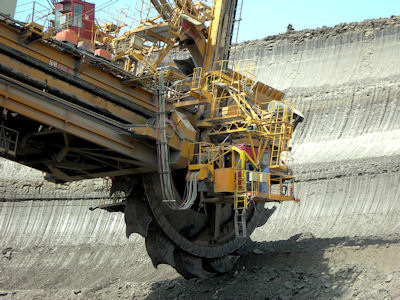Mines and Quarries Rely on Rubber-in-compression Couplings for Safety and Reliability
Rubber-in-compression couplings, manufactured by Renold Hi-Tec, provide failsafe operation and protect people and equipment in mining applications all around the world. On a typical application the couplings are fitted to the pit head winder, hoisting people and coal, where safety is critical and failure is not an option. The inherent failsafe nature of rubber-in-compression couplings ensures that whatever the circumstances the winder will always be operational.
Rubber-in-compression couplings are comprised of two round, metal sections fitting one inside the other with what looks like the paddles of a paddle steamer projecting inwards from the outer section and outwards from the inner. Rubber blocks are placed in the spaces in between the paddles, and, as the outer section is turned by the motor, it drives the inner section through the rubber blocks. As this happens the rubber is compressed, hence the term 'rubber-in-compression.'
When rubber is loaded in compression it behaves as an incompressible fluid and is inherently much stronger than the alternative technology of rubber-in-shear, or tension, where the slightest scratch in the rubber can lead to catastrophic tears and complete coupling failure. Rubber-in-compression couplings are intrinsically fail safe because even if the impossible happened and the rubber blocks disintegrated, the strong metal paddles would come together to provide the drive.
Rubber-in-compression couplings are also fitted on key capital plant in mines and quarries such as on grinding mills, crushers, armoured face conveyors and dint headers where reliability is essential to maintain high levels of production. The couplings are also maintenance free and do not require lubrication or adjustment of any kind, which means that they provide the lowest lifetime cost on all applications.
The only serviceable items are the rubber blocks which in most cases are good for over 10 years. They are also very robust and ideally suited to more arduous applications where the rubber blocks in the coupling dampen the shock loads and reduce the vibratory torque in the drive train.
